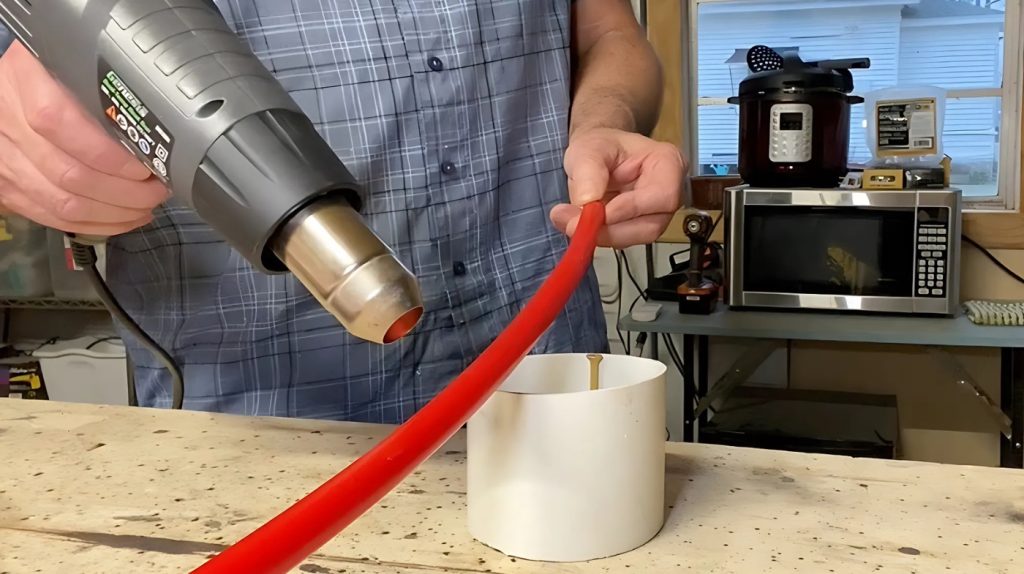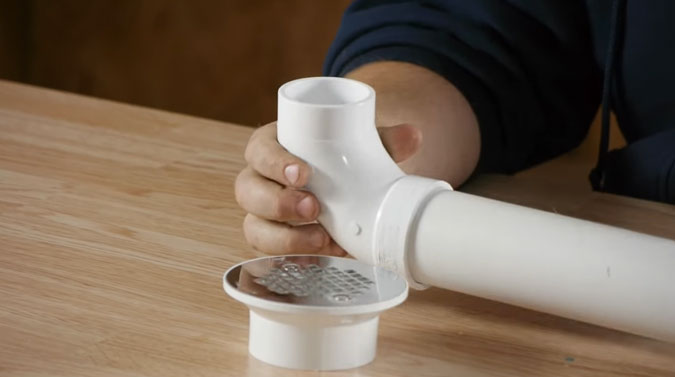Last Updated on April 16, 2025
To bend PEX pipe effectively, confirm you follow the minimum bend radius—six times the outside diameter for Uponor PEX. Use bend supports for tighter angles and avoid immediate direction changes.
If needed, heat the pipe gently with a heat gun for tighter bends, but cool it afterwards to set the shape. Regularly inspect for damage to prevent kinking. Following these guidelines will enhance your installation’s integrity.
There’s much more to optimizing your PEX bending techniques.
Key Takeaways
- Maintain a minimum bend radius of six times the outside diameter to prevent stress and failure in PEX pipes.
- Use bend supports to secure 90° angles and reduce the risk of kinking during installation.
- Heat guns can be used to soften PEX for tighter bends, but allow proper cooling afterward.
- Avoid immediate directional changes; allow two times the pipe’s diameter post-fitting for smooth transitions.
- Regularly inspect pipes for damage and handle them carefully to prevent kinking or abrasion during bending.
PEX Pipe Flexibility
PEX pipe’s inherent flexibility is one of its standout features, allowing it to adapt to various installation requirements with ease. This flexibility helps absorb energy from pressure surges, markedly reducing the risk of water hammer.
Even in freezing temperatures, PEX retains its flexibility, enabling it to expand without cracking, provided it has sufficient room to do so.
Additionally, PEX is categorized into types—PEX-a, PEX-b, and PEX-c—based on crosslinking levels, which affect performance. This material’s flexibility minimizes the need for fittings, enhancing water flow efficiency, and contributing to space-saving designs.
Moreover, higher cross-linking ratios in PEX A improve its resistance to temperature fluctuations, ensuring reliable performance in various conditions.
However, be cautious; excessive bending can lead to premature failure, so proper design and installation are vital to ensuring longevity and compliance with ASTM standards. For specific installations, tight turns may be necessary to fit within limited spaces, which can be achieved using proper bending techniques.
Tools and Techniques for Bending
When bending PEX pipe, having the right tools and techniques at your disposal can make all the difference. For PEX-AL-PEX pipes, you won’t need specialized tools, as their aluminum layer helps maintain bends.
However, regular PEX can benefit from bend supports, like those from SharkBite, which secure 90° bends without extra fittings. Utilizing PEX crimping tools can also facilitate efficient installation and enhance the integrity of your plumbing project.
PEX-AL-PEX pipes retain bends without special tools, while regular PEX benefits from supports for secure 90° angles. If you need tighter bends, consider using a heat gun to soften the pipe, but remember to cool it in the desired shape.
Gradual bending will help prevent kinking, and using supports during bending adds stability. Also, be mindful that bending PEX can reduce the number of fittings needed, potentially lowering costs and decreasing the risk of leaks.
Avoid overbending to prevent damage, and always verify your pipe is securely fixed to maintain the bent shape. These techniques will enhance your bending efficiency and results.
Proper Bending Practices
Achieving ideal results in bending PEX pipe requires adherence to specific practices that guarantee durability and functionality.
To guarantee optimal bending, follow these key guidelines:
- Maintain Minimum Bend Radius: For Uponor PEX, this is six times the outside diameter. Additionally, using a steel support band can enhance flexibility during the bending process.
- Avoid Immediate Direction Changes: Allow at least two times the pipe’s outside diameter after connections to prevent stress.
- Limit Bending Frequency: Frequent bending can lead to premature failure; use supports to manage tight spaces instead of excessive bends.
Installation Considerations
Considering various factors during installation is essential to guarantee a successful and durable PEX pipe system.
Adhere to the minimum bend radius, typically six times the outside diameter of the pipe, to prevent stress and potential failure. Use bend supports for tighter bends, especially with larger pipes.
Additionally, when installing PEX pipe, ensure you are using the appropriate PEX type A or B to match your project requirements. Ascertain you have adequate space around bends and avoid immediate directional changes after fittings to minimize stress.
Utilize bend guides to protect tubing, and consider employing elbows for larger sizes. Always follow manufacturer recommendations for specific bending guidelines and tool compatibility.
Handle PEX tubing carefully to prevent kinking or abrasion, and use protective sleeves when necessary to safeguard against damage.
Safety Precautions and Best Practices
While bending PEX pipe, it’s essential to prioritize safety and employ best practices to confirm the integrity of the installation.
Follow these guidelines to guarantee a successful bending process:
- Use Proper Tools: Utilize the right tools to prevent damage from over-manipulation.
- Check Temperature Conditions: Be aware that cold temperatures can make the pipe brittle, increasing the risk of cracks.
- Inspect for Damage: Regularly check the pipe for any signs of damage during and after bending.
Frequently Asked Questions
Can PEX Pipe Be Bent Multiple Times Without Damage?
You might think PEX pipe can be bent multiple times without issues, but that’s not entirely true. Each bend adds cumulative stress, increasing the risk of failure. PEX’s flexibility does allow for gentle curves, but tight bends can cause damage.
Additionally, factors like temperature and water chemistry play a critical role in its durability. To minimize risks, guarantee proper bend radii and consider using pipe supports for stability during installation.
What Is the Lifespan of Bent PEX Pipe?
The lifespan of bent PEX pipe typically remains within the standard range of 25 to 50 years, provided you bend it correctly. If you avoid overbending and use proper tools, bending won’t greatly impact its durability.
However, factors like UV exposure, soil conditions, and moisture can still affect its overall longevity. Regular inspections and maintenance are essential to identify any potential issues early, ensuring your PEX pipe lasts as long as possible.
How Does Temperature Affect PEX Bending?
Temperature’s like a master conductor, orchestrating PEX pipe’s behavior. When you heat PEX, it becomes more pliable, allowing for easier bends. Conversely, in colder conditions, it stiffens, making manipulation challenging.
As you work with PEX, remember that significant temperature changes can lead to expansion, impacting the bending stability. Applying heat during installation helps maintain the desired shape, ensuring your PEX retains its integrity and functionality over time.
Is It Possible to Straighten a Bent PEX Pipe?
Yes, you can straighten a bent PEX pipe, but it requires careful techniques. You might try the unrolling method to minimize kinks or soak the pipe in warm water to soften it, making it easier to manipulate.
Alternatively, pressing the bent side against a stable surface while unrolling can help. If you have access to a straightening tool, it can greatly enhance the process, ensuring a neater and more efficient plumbing setup.
Are There Any Specific Brands Better for Bending?
When considering brands for bending PEX, Uponor’s PEX-A is often your best choice due to its superior flexibility, allowing for tighter bends. Zurn’s PEX-B also performs well, offering a balance of cost and bending capability.
HeatLink provides similar flexibility to Uponor, making it a solid alternative. If you need a pipe that holds its shape, PEX-AL-PEX is effective without specialized tools. Always verify compatibility with fittings for peak performance.
Bend Without Breaking: Ensuring PEX Pipe Integrity
In conclusion, bending PEX pipe isn’t just about flexibility; it’s about precision, technique, and safety. By understanding the material’s properties, using the right tools, and following proper practices, you can achieve smooth bends without compromising integrity.
Remember to always consider installation factors and prioritize safety. With these guidelines, you guarantee efficient plumbing solutions, enhance your project’s success, and minimize the risk of damage.
So, bend wisely, install confidently, and enjoy your plumbing results.


